Pella Window Cost: Complete 2024 Pricing Guide
Pella window costs range from $250 to $3,600 per window, including installation. As a seasoned house flipper and home improvement expert, I’ve installed countless Pella windows, and I’m here to break down everything you need to know about their pricing in 2024.

Quick Reference: Pella Window Cost Table
Before we dive into the details, let’s get a bird’s eye view of Pella window costs. Here’s a comprehensive breakdown of prices by series and type:
| Series | Window Type | Price Range (Including Installation) |
|---|---|---|
| Architect Series | Double-Hung | $850 – $1,300 |
| Casement | $1,000 – $1,500 | |
| Awning | $800 – $1,200 | |
| Lifestyle Series | Double-Hung | $500 – $900 |
| Casement | $600 – $1,100 | |
| Awning | $550 – $950 | |
| Impervia Series | Double-Hung | $400 – $800 |
| Casement | $500 – $900 | |
| Awning | $450 – $850 | |
| 350 Series | Double-Hung | $350 – $700 |
| Casement | $400 – $800 | |
| Sliding | $350 – $750 | |
| 250 Series | Double-Hung | $300 – $600 |
| Casement | $350 – $700 | |
| Sliding | $300 – $650 | |
| Encompass Series | Double-Hung | $250 – $500 |
| Sliding | $250 – $550 |
Now that you have a quick overview, let’s dig into the factors that influence these costs.
Factors Affecting Pella Window Costs
As someone who’s worked on dozens of home renovation projects, I can tell you that several key factors impact the final price of your Pella windows:
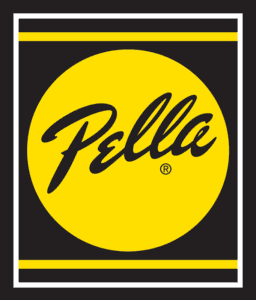
- Window Style: The type of window you choose significantly affects the cost. Picture windows, for example, are typically less expensive than bay or bow windows due to their simpler design.
- Materials: Pella offers windows in wood, fiberglass, and vinyl. Here’s a quick rundown:
- Wood: Most expensive, offers classic beauty and customization
- Fiberglass: Mid-range pricing, extremely durable and low-maintenance
- Vinyl: Most affordable, energy-efficient, and low-maintenance
- Size: It’s simple – larger windows cost more. Custom sizes will also increase the price.
- Energy Efficiency Features: Higher-end glass options with better insulation properties will bump up the cost but can lead to long-term energy savings.
- Installation Requirements: Factors like the age of your home, wall thickness, and any necessary repairs can affect installation costs.
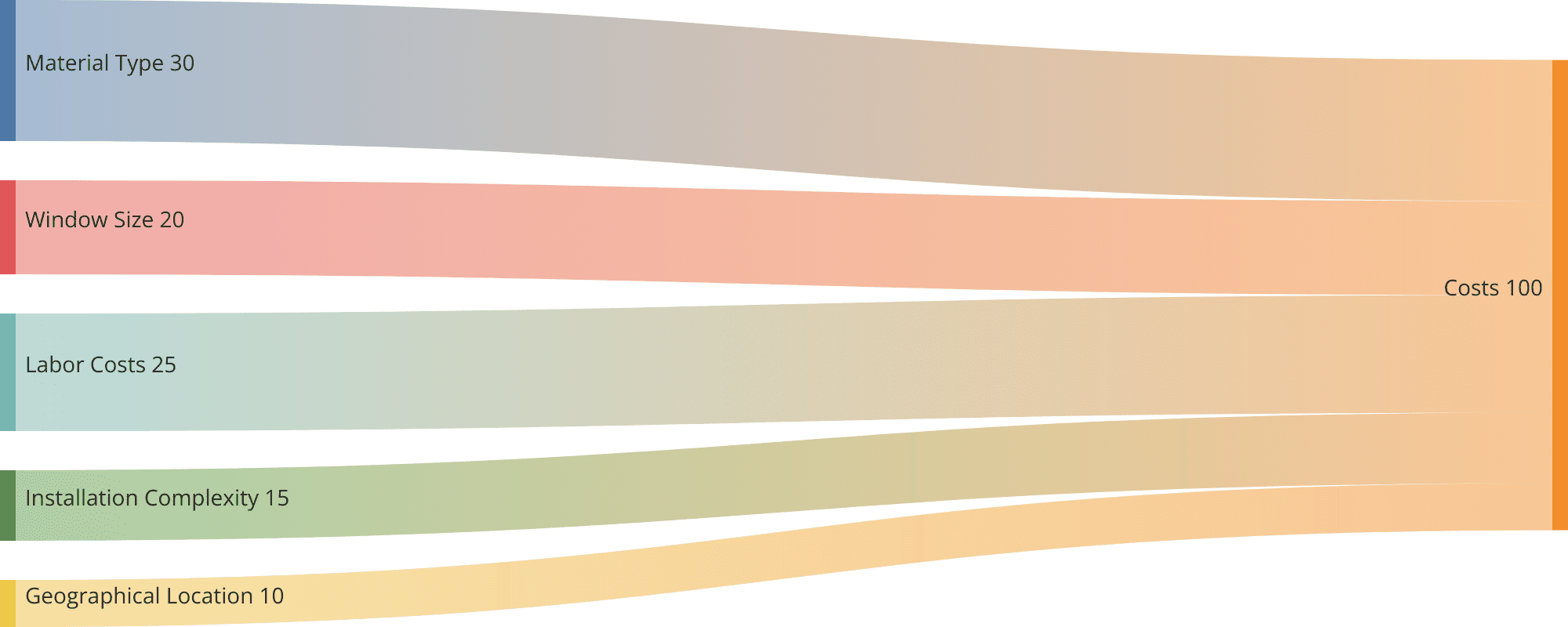
Let’s break down each of these factors in more detail.
1. Window Style
The style of window you choose can significantly impact your overall cost. Here’s a quick rundown of popular Pella window styles and their relative costs:
- Single-Hung and Double-Hung: These classic styles are among the most affordable options. Single-hung windows (where only the bottom sash moves) are typically less expensive than double-hung (where both sashes move).
- Casement and Awning: These crank-out windows are slightly more expensive than hung windows due to their hardware and operation mechanism.
- Sliding Windows: Generally priced similarly to hung windows, sliding windows are a great option for wide, short spaces.
- Picture Windows: Fixed windows that don’t open, picture windows are often less expensive due to their simple design. However, large picture windows can be costly.
- Bay and Bow Windows: These dramatic, protruding window combinations are the most expensive due to their size and complexity.
2. Materials
Pella offers windows in three primary materials, each with its own price point and benefits:
- Vinyl: The most budget-friendly option, Pella’s vinyl windows are low-maintenance and energy-efficient. They’re a great choice for homeowners looking to balance cost and performance.
- Fiberglass: Pella’s Impervia line features fiberglass windows. While more expensive than vinyl, fiberglass is incredibly durable and can mimic the look of painted wood.
- Wood: The most expensive option, wood windows offer unparalleled beauty and the ability to customize with different stains and paints. They’re ideal for historic homes or those seeking a high-end, traditional look.
3. Size
It’s pretty straightforward – larger windows require more materials and are more challenging to install, so they cost more. Custom sizes will also increase the price, as they require special manufacturing.
4. Energy Efficiency Features
Pella offers various glass options that can enhance your window’s energy efficiency:
- InsulShield® Low-E Glass: Helps keep heat in during winter and out during summer.
- SunDefense™ Low-E Glass: Ideal for hot climates, it blocks 94% of the sun’s ultraviolet rays.
- NaturalSun Low-E Glass: Provides excellent insulation while allowing the sun’s warmth to enter your home.
While these features increase the upfront cost, they can lead to significant energy savings over time.
5. Installation Requirements
Finally, the installation process itself can affect your overall cost. Factors that can increase installation costs include:
- Replacing larger windows
- Working with older homes that may require additional repairs
- Installing windows in difficult-to-reach areas
- Needing to modify the existing wall to fit a new window
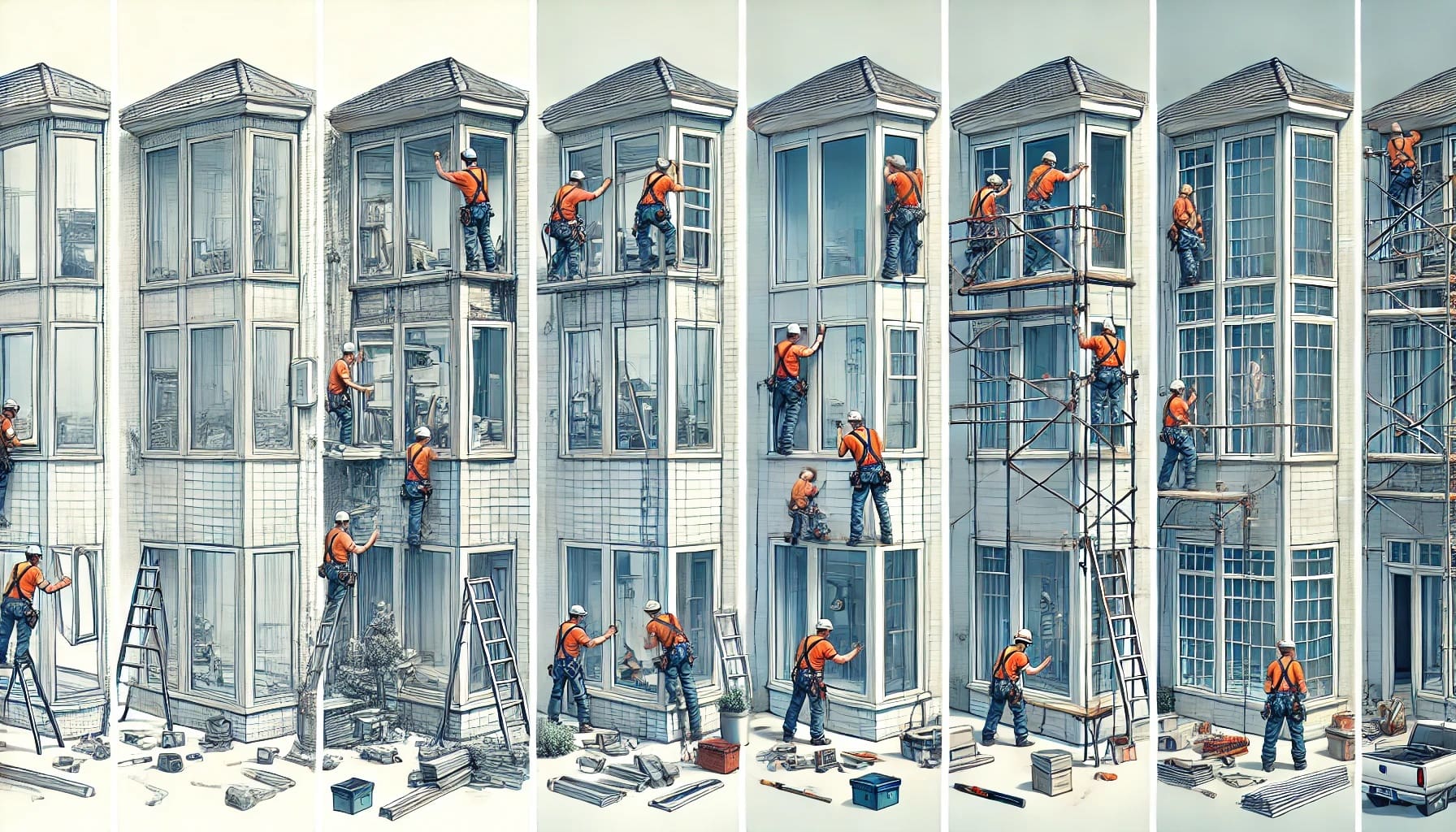
Understanding these factors will help you make an informed decision when budgeting for your Pella windows. In the next section, we’ll dive deep into each Pella window series and what they offer.
COMPARE QUOTESDetailed Breakdown of Pella Window Series
As a home improvement expert who’s worked with Pella windows extensively, I can tell you that each series has its own unique features and price points. Let’s break them down:
A. Pella Architect Series
The Architect Series is Pella’s top-of-the-line offering, designed for homeowners who want the ultimate in beauty and customization.
Key Features:
- Made from premium wood with aluminum-clad exteriors
- Highly customizable with various wood types, colors, and hardware options
- Excellent energy efficiency
- Ideal for historic renovations or high-end new construction
Price Range: $850 – $1,500 per window, installed
Pro Tip: While expensive, Architect Series windows can significantly boost your home’s value. In my experience flipping houses, these windows have been a major selling point for luxury properties.
B. Pella Lifestyle Series
The Lifestyle Series offers a great balance of performance and value, with options to suit various home styles.
Key Features:
- Wood construction with aluminum-clad exteriors
- Good customization options
- Available with between-the-glass blinds or shades
- Strong focus on energy efficiency and noise reduction
Price Range: $500 – $1,100 per window, installed
Insider Insight: The noise reduction feature of the Lifestyle Series is a game-changer. I once installed these in a home near a busy street, and the homeowners were amazed at how quiet their house became.
C. Pella Impervia Series
The Impervia Series features Pella’s proprietary fiberglass material, offering exceptional durability and performance.
Key Features:
- Made from Duracast® fiberglass, the strongest material available for windows
- Excellent for extreme climates
- Low maintenance and highly energy efficient
- Can be painted to match your home’s color scheme
Price Range: $400 – $900 per window, installed
Real-World Application: I’ve used Impervia windows in coastal properties where salt air and high winds are a concern. They’ve held up beautifully over the years, with no signs of wear or corrosion.
D. Pella 350 Series
The 350 Series is Pella’s premium vinyl window line, offering enhanced energy efficiency and durability.
Key Features:
- Multi-chambered vinyl frames for improved insulation
- Available with SunDefense™ Low-E glass for hot climates
- Variety of color options that are fade-resistant
- Strong weather resistance
Price Range: $350 – $800 per window, installed
Expert Tip: The 350 Series is my go-to recommendation for homeowners in hot climates. The SunDefense glass makes a noticeable difference in keeping homes cool and energy bills down.
E. Pella 250 Series
The 250 Series offers quality vinyl windows at a more affordable price point.
Key Features:
- Durable vinyl construction
- Good energy efficiency
- Limited color options compared to higher-end series
- Ideal for budget-conscious renovations or new constructions
Price Range: $300 – $700 per window, installed
[Image placeholder: Image of a 250 Series window in a standard white finish]Flipper’s Perspective: I often use 250 Series windows in rental properties or mid-range flips. They offer a great balance of quality and affordability that appeals to a wide range of buyers.
F. Encompass by Pella
Encompass is Pella’s most budget-friendly line, offering basic vinyl windows at an accessible price point.
Key Features:
- Simple, no-frills design
- Limited style and color options
- Meet ENERGY STAR® guidelines in all 50 states
- Best for tight budgets or large-scale projects where cost is a major factor
Price Range: $250 – $550 per window, installed
Budget Tip: When I’m working on a property with a lot of windows that need replacing, Encompass can be a lifesaver. They allow me to upgrade all the windows without breaking the bank, while still providing decent energy efficiency.

Understanding the different Pella window series is crucial in making the right choice for your home and budget. In the next section, we’ll dive into specific window types and their costs across these series.
COMPARE QUOTESPella Window Types and Their Costs

Now that we’ve covered the different Pella series, let’s break down the specific window types and their associated costs. As a seasoned home renovator, I’ve worked with all these styles and can give you the inside scoop on each.
A. Double-hung Windows
Double-hung windows are a classic choice, with both upper and lower sashes that move up and down.
Key Features:
- Easy to clean from inside the home
- Great for ventilation
- Suitable for most architectural styles
Price Range:
- Encompass: $250 – $500
- 250 Series: $300 – $600
- 350 Series: $350 – $700
- Impervia: $400 – $800
- Lifestyle: $500 – $900
- Architect: $850 – $1,300
Comparison table for Pella double-hung windows from different series:
| Feature | Pella 150 Series | Pella 250 Series | Pella 350 Series (Discontinued) |
|---|---|---|---|
| Material | Vinyl | Enhanced Vinyl | High-Strength Vinyl |
| Energy Efficiency | Dual-pane (optional triple-pane) | Triple-pane (standard) | Advanced Triple-pane |
| Durability | Precision welding | Multi-chamber PVC | Reinforced frames |
| Price | $260 to $425 | $250 to $950 | Higher than 250 Series |
| Color Options | White, Almond, Fossil | More options including dual colors | Comparable to 250 Series |
| Warranty | Non-transferable Limited Lifetime Warranty | Non-transferable Limited Lifetime Warranty | Non-transferable Limited Lifetime Warranty |
| Strength | Good overall durability | 52% greater strength compared to standard | 80% greater strength compared to generic |
This table provides a clear and concise comparison of the key features, benefits, and differences among the Pella 150, 250, and 350 Series double-hung windows.
Pro Tip: Double-hung windows are my go-to for bedrooms and living areas. They’re versatile and allow for great airflow when both sashes are open.
B. Casement Windows
Casement windows are hinged on one side and open outward like a door.
Key Features:
- Excellent ventilation
- Unobstructed views
- Easy to operate
Price Range:
- 250 Series: $350 – $700
- 350 Series: $400 – $800
- Impervia: $500 – $900
- Lifestyle: $600 – $1,100
- Architect: $1,000 – $1,500
Insider Insight: Casement windows are fantastic for areas where you want maximum ventilation, like kitchens or bathrooms. They catch side breezes that other window types might miss.
C. Awning Windows
Awning windows are hinged at the top and open outward from the bottom.
Key Features:
- Can be left open during light rain
- Great for ventilation in compact spaces
- Often used in combination with other window types
Price Range:
- 250 Series: $300 – $650
- 350 Series: $350 – $750
- Impervia: $450 – $850
- Lifestyle: $550 – $950
- Architect: $800 – $1,200
Real-World Application: I love using awning windows in basements or above kitchen sinks. They provide ventilation without sacrificing privacy, and you can leave them open even during a light drizzle.
D. Sliding Windows
Sliding windows have one or more panels that slide horizontally along a track.
Key Features:
- Easy to operate
- Great for wide, short spaces
- Unobstructed views
Price Range:
- Encompass: $250 – $550
- 250 Series: $300 – $650
- 350 Series: $350 – $750
- Impervia: $400 – $800
- Lifestyle: $500 – $900
Expert Tip: Sliding windows are perfect for spaces where you don’t want a window protruding outward, like over a patio or deck. They’re also great for kitchens, offering wide views and easy operation.
E. Bay and Bow Windows
Bay and bow windows project outward from the wall, creating additional interior space and a dramatic exterior appearance.
Key Features:
- Creates a focal point in a room
- Offers panoramic views
- Can include a window seat or storage
Price Range:
- 250 Series: $1,500 – $3,000
- 350 Series: $1,800 – $3,500
- Lifestyle: $2,500 – $5,000
- Architect: $3,000 – $6,000
Flipper’s Perspective: Bay and bow windows can dramatically increase a home’s value. In my flipping projects, adding a bay window to a living room or master bedroom often becomes a major selling point.
F. Picture Windows
Picture windows are fixed windows that don’t open, designed to provide unobstructed views.
Key Features:
- Maximizes natural light
- Energy efficient due to airtight seal
- Often used in combination with other window types
Price Range:
- Encompass: $200 – $500
- 250 Series: $250 – $600
- 350 Series: $300 – $700
- Impervia: $350 – $800
- Lifestyle: $400 – $900
- Architect: $700 – $1,400
Budget Tip: If you’re looking to brighten up a room without breaking the bank, a large picture window can be more cost-effective than multiple smaller, operable windows.
G. Custom Windows
Custom windows are designed to fit unique spaces or achieve specific architectural looks.
Key Features:
- Can be any shape or size
- Often used in high-end or historic renovations
- Maximum design flexibility
Price Range: Varies widely, typically starting at $1,000 and going up to $10,000 or more per window
Insider Insight: Custom windows can be a game-changer in creating a unique look for a home. I once used a series of custom triangular windows in a vaulted ceiling, and it transformed the entire space.
Understanding the costs and benefits of each window type is crucial in planning your window replacement project. In the next section, we’ll discuss how these stylish Pella windows can actually save you money through improved energy efficiency.
COMPARE QUOTESEnergy Efficiency and Cost Savings
As a home improvement expert who’s seen countless energy bills before and after window installations, I can’t stress enough how much of a difference energy-efficient windows can make. Pella windows are at the forefront of energy efficiency technology, and here’s why that matters for your wallet.
A. Pella’s Energy-Efficient Features
Pella incorporates several cutting-edge technologies to maximize energy efficiency:
- Low-E Glass: Pella’s InsulShield® glass options include:
- Advanced Low-E: Great for mixed climates
- SunDefense™ Low-E: Ideal for hot, sunny climates
- NaturalSun Low-E: Perfect for cold climates
- Gas Fills: Many Pella windows use argon gas between panes to improve insulation.
- Multiple Panes: Double and triple-pane options provide excellent insulation.
- Foam-Insulated Frames: Available in some vinyl and fiberglass models.
Real-World Impact: In a recent renovation project, I replaced old single-pane windows with Pella’s double-pane Low-E windows. The homeowners reported a 20% decrease in their energy bills the following year!
B. Potential Long-Term Savings
While energy-efficient windows have a higher upfront cost, they can lead to significant savings over time:
- Reduced Energy Bills: Expect to save between $100 to $500 annually, depending on your climate and the windows you’re replacing.
- Increased Home Value: Energy-efficient windows can boost your home’s resale value by 5-15%.
- Tax Credits: Some Pella windows qualify for federal tax credits for energy efficiency. Always check current regulations for eligibility.
Here is a table comparing various Pella window types and their potential annual energy savings estimates.
| Pella Window Type | Example Series | Estimated Annual Energy Savings |
|---|---|---|
| Vinyl Windows | Pella 250 Series | $450 – $700 |
| Wood Windows | Pella Lifestyle Series | $400 – $900 |
| Fiberglass Windows | Pella Impervia Series | $550 – $950 |
| Aluminum-Clad Wood Windows | Pella Architect Series | $600 – $1000 |
| Budget-Friendly Vinyl Windows | Pella Encompass Series | $200 – $300 |
C. Energy Star Certification
Many Pella windows are ENERGY STAR® certified, meaning they meet strict energy efficiency guidelines set by the U.S. Environmental Protection Agency and the U.S. Department of Energy.
Pro Tip: When comparing window quotes, don’t just look at the upfront cost. Consider the long-term energy savings as part of your investment calculation.
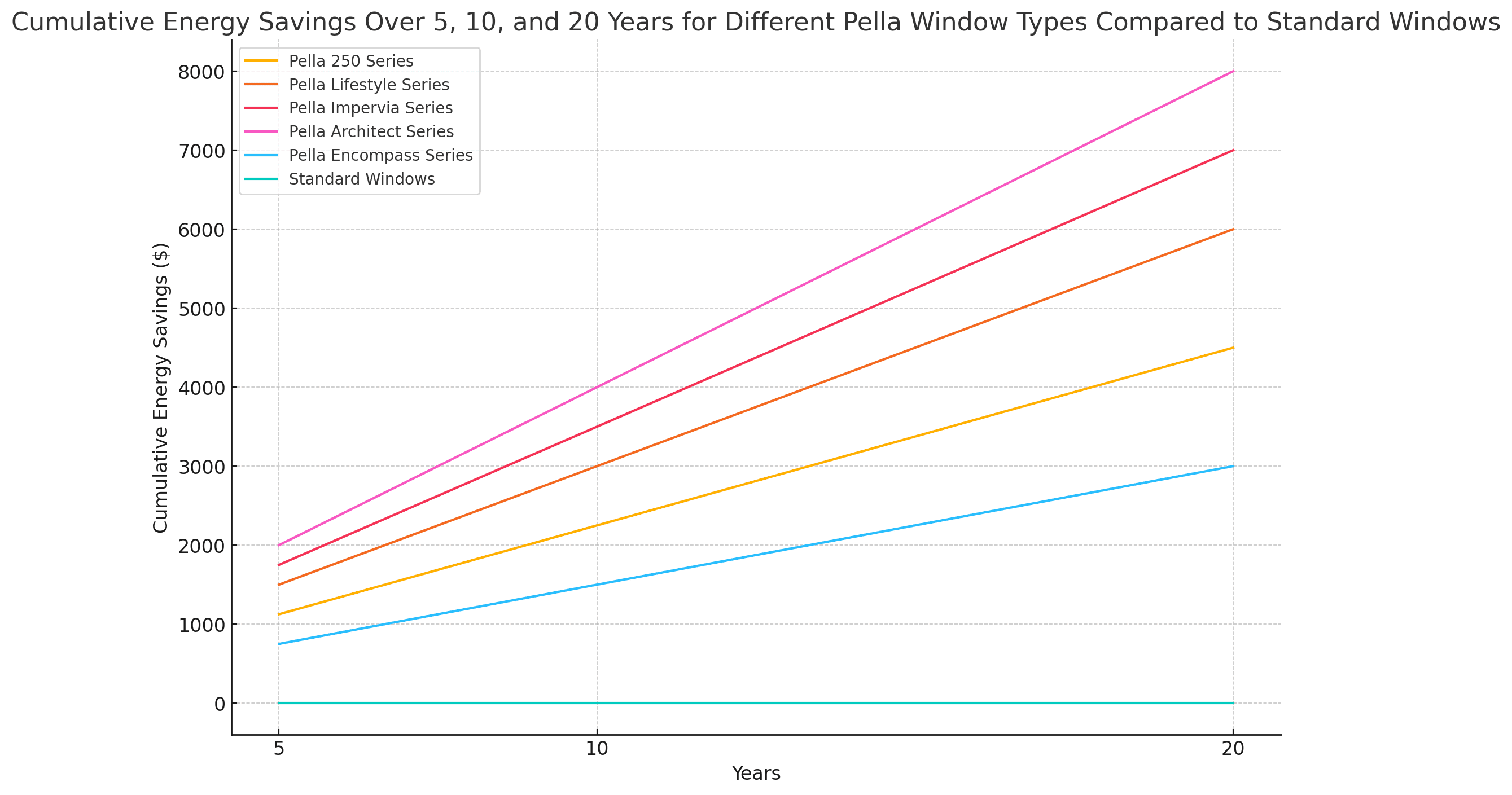
Installation Costs and Considerations
As someone who’s both installed windows myself and hired professionals for larger projects, I can tell you that proper installation is crucial for getting the most out of your Pella windows.
A. Professional vs. DIY Installation
Professional Installation:
- Pros: Guaranteed work, often warrantied, proper handling of unexpected issues
- Cons: More expensive, need to coordinate schedules
DIY Installation:
- Pros: Can save money, flexible timing
- Cons: Risk of improper installation, potential to void warranties, time-consuming
My Advice: Unless you’re very handy and have experience with window installation, I always recommend professional installation. The risk of air leaks, water damage, or reduced efficiency from improper installation isn’t worth the potential savings.
B. Factors Affecting Installation Costs
- Window Size and Type: Larger windows and complex styles (like bay windows) take more time and effort to install.
- Location in Home: Second-story or hard-to-reach windows may require special equipment.
- Existing Frame Condition: If the current frame is damaged or rotted, repairs will increase costs.
- Structural Modifications: Changing window size may require wall modifications.
- Number of Windows: Installing multiple windows at once can reduce the per-window cost.
C. Average Installation Costs by Window Type
Here’s a breakdown of average installation costs by window type:
Chart: Installation Cost Breakdown
| Window Type | Average Installation Cost |
|---|---|
| Single-Hung | $100 – $250 |
| Double-Hung | $150 – $350 |
| Casement | $200 – $400 |
| Sliding | $150 – $350 |
| Picture | $150 – $300 |
| Bay/Bow | $1,000 – $2,500 |
Note: These are averages. Your actual costs may vary based on the factors mentioned above.
Insider Tip: If you’re replacing multiple windows, try to do them all at once. Most installers offer better rates for larger jobs, which can save you money in the long run.
Pro Tip: Always get at least three quotes from licensed and insured window installers. Make sure they’re familiar with Pella products and can provide references for similar jobs they’ve completed.
Understanding both the product costs and installation considerations will help you budget accurately for your window replacement project. In the next section, we’ll compare Pella windows to other major brands to see how they stack up.
Comparing Pella to Other Major Window Brands
As someone who’s worked with various window brands throughout my career, I can tell you that Pella stands out in many ways. However, it’s important to understand how they compare to other major players in the market. Let’s break it down:
A. Pella vs. Andersen
Andersen is perhaps Pella’s biggest competitor in the window market. Here’s how they stack up:
Pella:
- Pros: Wide range of materials (wood, fiberglass, vinyl), excellent customization options
- Cons: Can be more expensive, especially for top-tier lines
Andersen:
- Pros: Known for durability, good energy efficiency ratings
- Cons: Fewer material options (primarily wood and composite)
Price Comparison: Pella and Andersen are often similarly priced, with Pella offering more budget-friendly options in their vinyl lines.
Comparison Table: Pella vs. Andersen
| Feature | Pella | Andersen |
|---|---|---|
| Materials | Wood, Fiberglass, Vinyl | Wood, Composite |
| Price Range | $250 – $3,600 | $300 – $3,800 |
| Energy Efficiency | Excellent | Excellent |
| Customization | Extensive | Good |
| Warranty | Limited Lifetime | 20-year limited |
Expert Opinion: In my experience, Pella edges out Andersen in terms of style options and customization, while Andersen has a slight advantage in overall durability.
B. Pella vs. Marvin
Marvin is known for its high-end windows and doors. Here’s how it compares to Pella:
Pella:
- Pros: More affordable options available, good balance of quality and price
- Cons: Top-tier lines can be pricey
Marvin:
- Pros: Exceptional quality, great for high-end or historical renovations
- Cons: Generally more expensive, fewer budget-friendly options
Price Comparison: Marvin tends to be more expensive than Pella, especially when comparing entry-level products.
Comparison Table: Pella vs. Marvin
| Feature | Pella | Marvin |
|---|---|---|
| Materials | Wood, Fiberglass, Vinyl | Wood, Fiberglass, Aluminum |
| Price Range | $250 – $3,600 | $400 – $4,000 |
| Energy Efficiency | Excellent | Excellent |
| Customization | Extensive | Extensive |
| Warranty | Limited Lifetime | Limited Lifetime |
Real-World Application: I’ve used both Pella and Marvin in high-end renovations. While both perform excellently, I find that Pella offers more flexibility in pricing without sacrificing much in quality.
C. Pella vs. Milgard
Milgard is known for its vinyl and fiberglass windows. Here’s how it stacks up against Pella:
Pella:
- Pros: Wider range of materials, more high-end options
- Cons: Can be more expensive, especially for wood windows
Milgard:
- Pros: Good value for money, strong warranty
- Cons: Limited wood options, less brand recognition in some regions
Price Comparison: Milgard is often more affordable than Pella, especially in the vinyl window category.
Comparison Table: Pella vs. Milgard
| Feature | Pella | Milgard |
|---|---|---|
| Materials | Wood, Fiberglass, Vinyl | Vinyl, Fiberglass, Aluminum |
| Price Range | $250 – $3,600 | $200 – $2,500 |
| Energy Efficiency | Excellent | Very Good |
| Customization | Extensive | Good |
| Warranty | Limited Lifetime | Full Lifetime |
Flipper’s Perspective: When I’m working on mid-range flips, I often consider Milgard for their good balance of quality and affordability. However, for higher-end projects or when clients want wood windows, I usually lean towards Pella.
Key Takeaway: While Pella, Andersen, Marvin, and Milgard all make quality windows, Pella stands out for its wide range of options across different price points and materials. This versatility makes Pella a strong choice for various home styles and budgets.
Remember, the best window brand for you depends on your specific needs, budget, and home style. In the next section, we’ll dive into Pella’s warranty options and customer service reputation to give you a full picture of what to expect after your purchase.
COMPARE QUOTESPella Window Warranties and Customer Service
As a contractor who’s dealt with countless window installations and post-installation issues, I can’t stress enough how important warranties and customer service are. Let’s dive into what Pella offers in these areas.
A. Overview of Warranty Options
Pella offers different warranties depending on the product line:
- Limited Lifetime Warranty:
- Applies to: Most Pella wood windows and patio doors
- Covers: Non-glass components for as long as you own and occupy your home
- Glass: 20-year coverage
- 20/10 Limited Warranty:
- Applies to: Pella Impervia fiberglass windows and patio doors
- Covers: Non-glass components for 20 years, glass for 10 years
- 10/5 Limited Warranty:
- Applies to: Pella 250 Series and Encompass by Pella vinyl windows and patio doors
- Covers: Non-glass components for 10 years, glass for 5 years

Pro Tip: Always read the full warranty document. Some aspects, like finish on hardware, may have shorter coverage periods.
B. Customer Service Reputation
In my experience, Pella’s customer service is generally above average in the industry. Here’s what you can expect:
- Responsiveness: Pella typically responds to inquiries within 24-48 hours.
- Problem Resolution: They usually work to resolve issues promptly, especially if the problem is covered under warranty.
- Expertise: Customer service reps are generally knowledgeable about products and can provide useful advice.
- Local Dealers: Pella works through a network of local dealers, which can sometimes lead to variations in service quality.
Real-World Example: I once had a client whose Pella window developed a small leak two years after installation. Pella’s customer service was prompt in sending out a technician who identified and fixed the issue under warranty, at no cost to the homeowner.
C. Post-Installation Support
Pella offers several avenues for post-installation support:
- Online Resources: Pella’s website provides care and maintenance guides, troubleshooting tips, and video tutorials.
- Local Dealers: Your local Pella dealer can often provide in-person support and advice.
- Customer Service Hotline: Available for more complex issues or when you can’t find answers online.
- Professional Service: For issues requiring hands-on attention, Pella can dispatch service technicians.
Insider Tip: Keep all your paperwork, including receipts and warranty information. I always advise my clients to create a “Window Folder” with all relevant documents. This can save a lot of hassle if you ever need to make a warranty claim.
Financing Options for Pella Windows
Window replacement can be a significant investment. Here’s what you need to know about financing your Pella windows:
A. Pella’s Financing Programs
Pella offers financing options through partnerships with lending institutions:
- Special Financing: Often includes promotional periods with 0% interest if paid in full within a certain timeframe (typically 12-18 months).
- Fixed Monthly Payments: Longer-term options with fixed interest rates for those who prefer to spread out payments.
- Seasonal Promotions: Pella frequently runs special financing offers, especially during slower seasons.
B. Third-Party Financing Options
Beyond Pella’s offerings, consider these alternatives:
- Home Equity Loans or Lines of Credit: Often offer lower interest rates but use your home as collateral.
- Personal Loans: Unsecured loans from banks or online lenders, interest rates vary based on credit score.
- Credit Cards: Some offer 0% introductory APR on large purchases, but be cautious of high interest rates after the promotional period.
- Government Programs: Some states or utilities offer low-interest loans for energy-efficient home improvements.
Comparison Table: Financing Options
| Option | Pros | Cons | Typical Interest Rates |
|---|---|---|---|
| Pella Financing | Convenient, sometimes 0% interest | May have higher rates after promo period | Varies (0% – 15%) |
| Home Equity Loan | Lower interest rates | Uses home as collateral | 3% – 8% |
| Personal Loan | No collateral required | Higher interest rates | 6% – 36% |
| Credit Card | Potential rewards, introductory 0% APR | High interest after promo period | 15% – 25% |
C. Tips for Budgeting Your Window Replacement Project
- Get Multiple Quotes: Always get at least three quotes to ensure you’re getting a fair price.
- Consider Long-Term Savings: Factor in potential energy savings when budgeting.
- Look for Rebates: Check for manufacturer rebates, energy efficiency rebates from utilities, or tax credits.
- Prioritize: If budget is tight, consider replacing the most critical windows first and doing the rest later.
- Don’t Skimp on Quality: Cheaper isn’t always better. Invest in quality windows to avoid costly replacements down the line.
Flipper’s Advice: In my flipping projects, I often use a mix of financing options. For larger projects, I might use a home equity line of credit for its lower interest rates. For smaller jobs, Pella’s promotional financing can be a great option if you’re confident you can pay it off during the 0% interest period.
Understanding your financing options can help make your window replacement project more manageable. In the next section, we’ll look at some real-life examples of Pella window installations and their impact on homes.
COMPARE QUOTESCustomer Testimonials and Case Studies
As a contractor, I’ve seen firsthand how Pella windows can transform homes. Let’s look at a few real-life examples that showcase the impact of these windows.
Case Study 1: The Energy-Efficient Upgrade
Client: The Johnsons, Suburban Home in Chicago
Project: Replacing 15 old single-pane windows with Pella 250 Series Double-Hung Windows
Before: The Johnsons were dealing with drafty windows and sky-high energy bills in their 1970s home.
After: With new Pella windows, they saw a 30% reduction in their energy bills within the first year. The house felt noticeably warmer in winter and cooler in summer.
Client Quote: “We should have done this years ago! Our home is so much more comfortable now, and the energy savings are incredible.” – Sarah Johnson
Case Study 2: The Historic Renovation
Client: The Bakers, 19th Century Victorian in Boston
Project: Replacing 20 windows with Pella Architect Series Wood Windows
Before: The Bakers wanted to maintain their home’s historic charm while improving functionality and efficiency.
After: The new wood windows perfectly matched the home’s character while providing modern energy efficiency and ease of use.
Client Quote: “Pella’s attention to detail is amazing. Our home looks authentic to its period, but now we can actually open the windows without a struggle!” – Tom Baker
Case Study 3: The Modern Makeover
Client: The Lius, Contemporary Home in Miami
Project: Installing Pella Impervia Fiberglass Windows throughout the home
Before: The Lius wanted windows that could withstand Florida’s harsh climate while complementing their home’s modern aesthetic.
After: The sleek Impervia windows not only enhanced the home’s contemporary look but also provided excellent protection against heat and hurricanes.
Client Quote: “These windows are a game-changer. They look fantastic and stood up beautifully to last year’s hurricane season.” – Emily Liu
Key Takeaways from These Case Studies:
- Energy Efficiency: Pella windows consistently deliver on their promise of improved energy efficiency.
- Versatility: From historic homes to modern designs, Pella offers options that complement various architectural styles.
- Climate Considerations: Pella’s different product lines can meet diverse climate needs, from Chicago winters to Florida hurricanes.
Frequently Asked Questions

As a window installation expert, I’ve fielded countless questions about Pella windows over the years. Here are some of the most common ones:
- Q: How long do Pella windows typically last?
A: With proper care and maintenance, Pella windows can last 20-30 years or more. Wood windows may require more upkeep but can last even longer if well-maintained. - Q: Are Pella windows worth the investment?
A: In my professional opinion, yes. While they may have a higher upfront cost than some brands, their durability, energy efficiency, and aesthetic appeal often make them a worthwhile long-term investment. - Q: Can I install Pella windows myself?
A: While it’s possible for an experienced DIYer to install Pella windows, I generally recommend professional installation. Improper installation can lead to air leaks, water damage, and may void your warranty. - Q: How do Pella’s vinyl windows compare to their wood options?
A: Pella’s vinyl windows are more affordable and low-maintenance, making them great for many homeowners. However, wood windows offer superior insulation and a classic look that’s hard to beat, especially for historic homes. - Q: Do Pella windows increase home value?
A: Yes, quality window replacements typically recoup 70-80% of their cost in increased home value. Pella windows, known for their quality, can be especially attractive to potential buyers. - Q: How often do Pella windows need to be replaced?
A: With proper care, Pella windows shouldn’t need replacement for at least 20 years. Many last much longer, especially in mild climates. - Q: Are there any common issues with Pella windows?
A: Like any product, Pella windows can occasionally have issues. In my experience, the most common complaints involve seal failures in double-pane windows (which are covered under warranty) and occasional hardware problems.
Pro Tip: Always consult your warranty document or reach out to Pella directly if you’re unsure about any aspect of your windows’ performance or maintenance needs.

Conclusion
After years of working with various window brands and seeing their performance in real-world conditions, I can confidently say that Pella windows are a solid choice for most homeowners. Let’s recap the key points we’ve covered:
A. Recap of Key Points
- Cost Range: Pella windows typically cost between $250 to $3,600 per window, including installation. The wide range accommodates various budgets and needs.
- Series Options: From the budget-friendly Encompass line to the high-end Architect Series, Pella offers options for every price point and style preference.
- Energy Efficiency: Pella’s commitment to energy efficiency can lead to significant long-term savings on energy bills.
- Customization: With a wide array of materials, styles, and features, Pella windows can be tailored to suit almost any home.
- Durability: Pella’s quality construction and materials contribute to windows that can last 20-30 years or more with proper care.
- Warranty: Pella offers solid warranty options, with many products covered by a limited lifetime warranty.
- Customer Service: Generally above-average customer service and post-installation support set Pella apart from many competitors.
B. Final Thoughts on Value and Investment
In my professional opinion, Pella windows offer excellent value for most homeowners. While they may not always be the cheapest option upfront, their combination of quality, energy efficiency, and aesthetic appeal often makes them a worthwhile investment.
For budget-conscious homeowners, Pella’s vinyl lines offer good quality at a more accessible price point. For those focused on long-term value or with specific style requirements, Pella’s higher-end wood and fiberglass options are hard to beat.
Remember, the “best” window choice depends on your specific needs, budget, and home style. Pella’s wide range of options means most homeowners can find a suitable product within their line.
Insider Tip: Don’t just focus on the windows themselves. Proper installation is crucial for getting the most out of your investment. Always work with qualified, experienced installers to ensure your Pella windows perform as intended.
Call to Action
Ready to take the next step in your window replacement journey? Here’s what I recommend:
- Assess Your Needs: Take stock of your home’s current windows. Which ones need replacing? What are your priorities (energy efficiency, sound reduction, style, etc.)?
- Explore Pella’s Options: Visit Pella’s website or a local showroom to see the different series and styles available.
- Get Multiple Quotes: Reach out to at least three local Pella dealers for quotes. This will give you a good sense of the price range for your specific project.
- Consider Financing: If budget is a concern, look into Pella’s financing options or explore third-party financing to make your project more manageable.
- Plan Your Timeline: Window replacement can be disruptive, so plan your project for a time that’s convenient for your household.
Remember, investing in quality windows is one of the best things you can do for your home’s comfort, efficiency, and value. Whether you choose Pella or another brand, taking the time to make an informed decision will pay off in the long run.
Additional Resources
To help you make the most informed decision possible, here are some additional resources you might find helpful:
- Pella’s Official Website: www.pella.com
For the most up-to-date information on products, features, and local dealers. - Energy Star Window Ratings: www.energystar.gov/products/building_products/residential_windows_doors_and_skylights
To understand energy efficiency ratings and their impact. - National Fenestration Rating Council: www.nfrc.org
For independent ratings on window performance. - Database of State Incentives for Renewables & Efficiency: www.dsireusa.org
To find potential rebates or tax incentives for energy-efficient windows in your area. - Home Improvement Financing Guide: www.consumerfinance.gov/about-us/blog/what-you-need-to-know-before-you-take-out-a-home-improvement-loan/
For more information on financing options for your window replacement project.
Final Thought: As a contractor who’s seen the impact of quality windows firsthand, I can’t stress enough how important this decision is. Take your time, do your research, and don’t hesitate to ask questions. Your future self (and your energy bills) will thank you!
Remember, the journey to beautiful, efficient windows starts with a single step. Whether you’re ready to dive in or just starting to explore your options, I hope this guide has given you the knowledge and confidence to make the best decision for your home. Here’s to brighter, more comfortable living spaces!
If you have any more questions or need further clarification on anything we’ve discussed, don’t hesitate to reach out to a Pella professional or your local window expert. Happy window shopping!
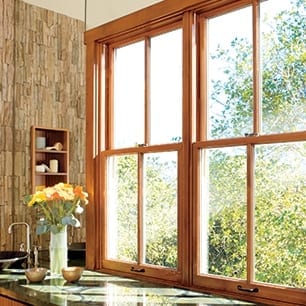
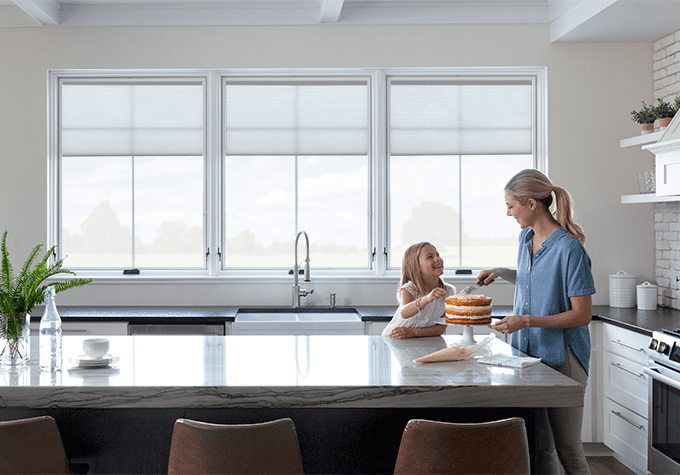
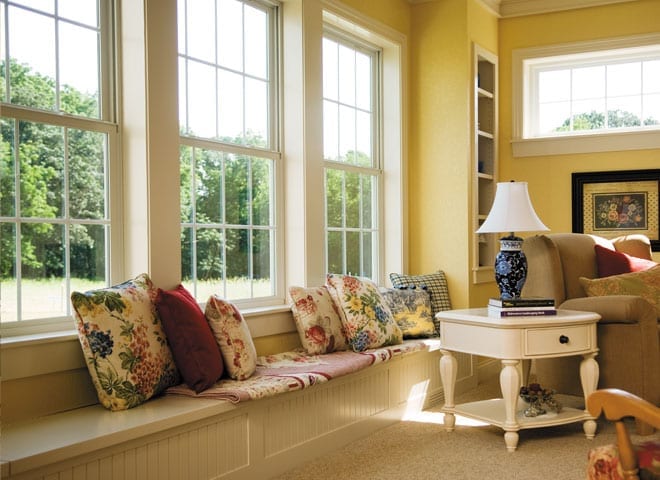
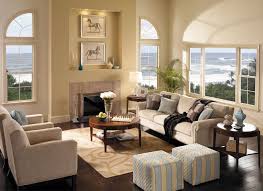
Great post! I’m actually in the process of researching new windows for my home and found this post super helpful. I love how you broke down the different types of Pella windows and their estimated costs. It’s really helpful in making an informed decision. Thanks for sharing!
I’m looking at installing a Pella picture window. The opening measures 47×68. What can I expect to pay for a wood casement picture window.
Thanks !
I have 2- windows 48-36 and 2- 32-48 that I would appreciate a quote. Looking for Hurricane Series I’m from Texas in which we have our friends visit every once in a while. I understand this type no need to broad up windows? What do you have along this need? Price for window and price for installation. Our home is electric never really open windows advise double hung better. Thank you for your reply in advance.
i have 30 windows avg size sliding door, front door and garage door any estimate on the 250 series windows a range is fine, anyone who estimates the range will help get the job thanks
I was just quoted about $3,000 for three large windows, all 250 series. There are two sliders, 83wX58h and a 2-wide double hung, 72wX59h. I almost fell over. I was expecting about $1000-1500 each. I’m in a western suburb of Chicago.
I got a recent quote from them for the 250 series and it also seemed high to me based on the prices I’ve seen listed online, but I’ve just started window shopping. About $1,500 for a sliding window (79″ wide, 21″ high about; it would be $2,200 for awning version of that size), just over $6,000 for my very large living room window (about 120″ wide, 67″ high; center pane with casement windows on either side), and about $3,700 for a very large kitchen window (similar style with casements, 38″ high and 67″ wide). I was also looking at increasing the size of a couple bedroom windows from that 79″ wide x 21″ high and expanding that to a more typical 44″ high (double-hung) would be $3,400/each. Those costs include removing the old windows, installing the new ones, whatever else they need to do to complete the process. My only other options in my area seem to be Renewal by Anderson (which I’ve heard is more expensive) and Marvin.
How much would a 250 bay window cost size 80/60
Just got a quote from Pella (I’m located in Utah) for replacing 17 windows. Half of them were going to be Impervia and the other half 250 series. Total bid came in over $32,000 with the current promotion. Average price for the Impervia windows including installation was around $2200 (large-ish 60×60 windows). For a small sliding bathroom window in the vinyl 250 series, with installation the price came to $1600 (ouch).
Throwing this out there to point out that estimates you find by browsing the internet may in no way reflect reality.
$1600 for a bathroom window? Especially when getting you on all the other windows?!? They should have thrown that sucker in for free!!! I was going to contact them for an estimate, but based on your experience, I’ll skip them!
I have 3 windows I need replacements for. All 3 are Fiber double hung with dividers. 2 measure 60″ tall by 45″ wide and have 3 grids(total of 6 “little windows) the last is 52 1/2″ tall and 36” wide and has 3 grids (6 little windows on both the top and bottom. They need to be energy efficient and have double panes (maybe 3 panes?) and coated so that my furniture does not get bleached. Approximately what should this project cost? nThank you for your help.
pella350 series 2-wide double-hung 66;5 x47.5 white cost average cost
What would be the average cost for a Pella double hung mulled 2 window unit of (vinyl) measuring 6′ 6″ X 5′ 4″ ?
What is the average cost of INSTALL for a unit this size?
Am looking for cost comparison vs. similar Matthews Bros product?
Thank you.
Robert Spindell